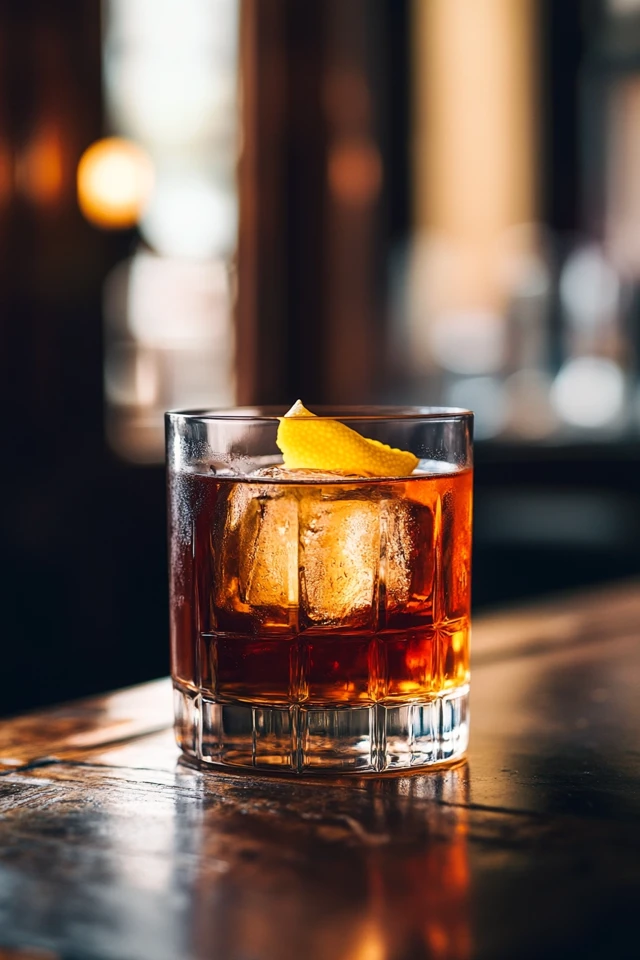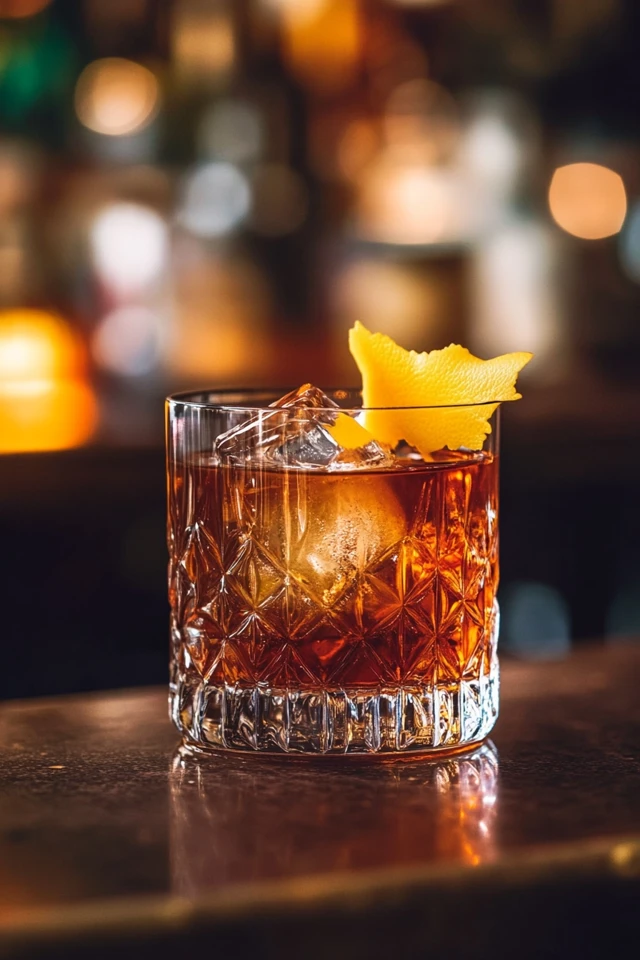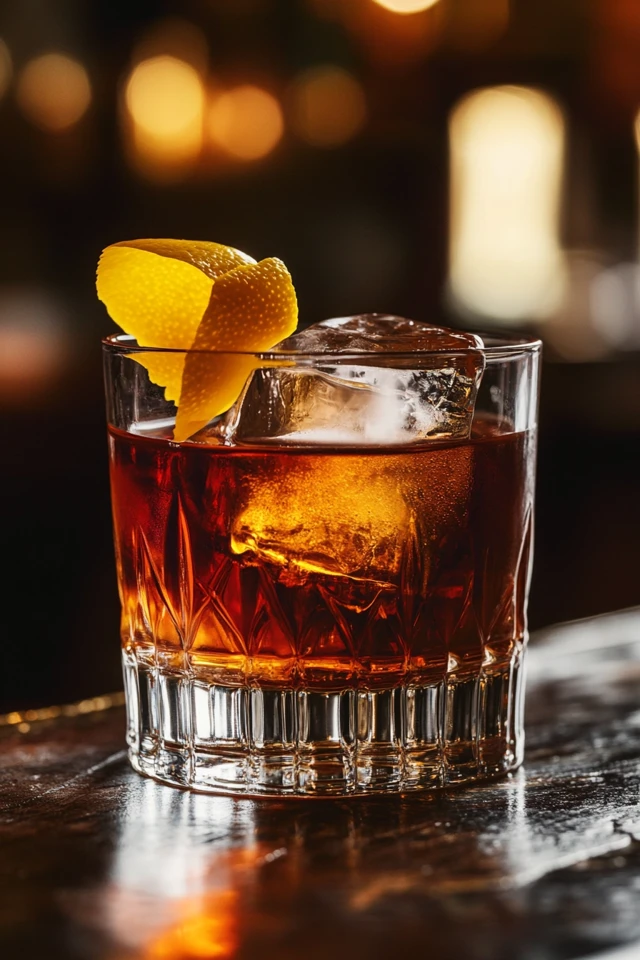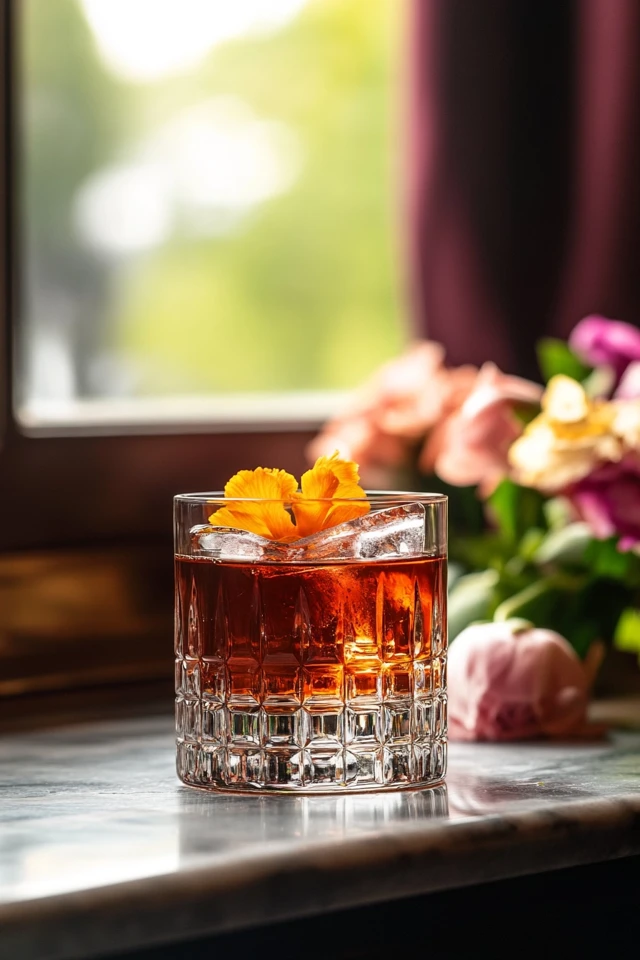Introduction
The first time I had a Sazerac, I didn’t even order it myself. I was sitting at a dimly lit bar in New Orleans, tucked just off Bourbon Street—one of those places with heavy wooden chairs, jazz humming low in the background, and bartenders in suspenders who look like they’ve seen things. I asked the bartender for something “classic and serious,” and he nodded with the kind of quiet respect usually reserved for unspoken rites of passage. A few minutes later, he set down a short glass that looked deceptively simple—no garnish, no straw, just a swirl of amber and the faintest sheen of lemon oil.
One sip, and I was wide awake.
It was strong—really strong—but smooth, with warmth that spread across my chest like a slow fire. There was a whisper of something herbal, a softness from the sugar, a citrus kiss from the lemon peel, and the unmistakable sting of rye. It tasted like the kind of drink someone orders when they’re ready to sit still, speak honestly, and take their time.
Since then, the Sazerac has become my go-to when I want something with backbone. It’s not a lighthearted cocktail. It doesn’t sparkle. It doesn’t hide. It stands tall and speaks in full sentences. I’ve made it for poker nights, quiet evenings on the porch, and once—because I couldn’t help myself—at a holiday party where everyone else was sipping spiked eggnog. It was the boldest thing on the table, and that was exactly the point.
The Sazerac is a drink with stories. And the more you sip, the more you start to feel like you’re part of one too.
The Perfect Drink for Slow Evenings, Good Conversations & Big Flavor
The Sazerac isn’t for rushing. This is the kind of cocktail you sip while listening to a record that has a few scratches. It’s for end-of-night moments when you want to sit back, think a little, and appreciate something with substance.
It’s ideal for quiet dinners, long conversations, and those moody fall or winter nights when you want to feel the warmth of your drink all the way through. But it also shines in celebratory moments—New Year’s Eve, promotions, even small personal victories like making it through a long week. When you pour a Sazerac, you’re not just drinking—you’re marking a moment.
One of my favorite memories was a night on the back porch after a long, frustrating week. I turned on some old blues, lit a candle, and made myself a Sazerac with extra care. I used my good rye. I flamed the lemon peel. And by the time I took the first sip, the whole world had softened around the edges. That’s the magic of the Sazerac—it grounds you. It’s not just a drink, it’s a ritual.
Picture Gallery:








Why Rye, Absinthe, Bitters & Sugar Make This Classic a Masterpiece
The Sazerac is a drink of contrasts: bitter but smooth, sweet but stiff, simple in ingredients but layered in flavor. Here’s what makes it work:
Rye Whiskey: Traditionally, rye is the soul of a Sazerac. It brings spice, boldness, and dry warmth. It’s assertive without being harsh, and it’s the reason this drink feels alive. Bourbon can be used, but rye gives you that true, sharp character the Sazerac is known for.
Absinthe (or Herbsaint): This is the mysterious twist. Just a rinse or a few drops coat the glass and bring an herbal, almost anise-like aroma that transforms the drink into something complex. It doesn’t dominate—it lingers.
Bitters (Peychaud’s): A New Orleans original, Peychaud’s bitters are lighter than Angostura, with floral and cherry-like notes that play beautifully with the rye and absinthe. They’re essential. Don’t skip them.
Sugar Cube or Simple Syrup: This adds just enough sweetness to mellow the whiskey without dulling its edge. Traditionally, a sugar cube is muddled with bitters and water, but I’ve used simple syrup when I’m in a hurry. The result is just as smooth.
Lemon Peel: Expressed over the glass and then discarded (or not, depending on who you ask), it adds a bright citrus note that lifts everything else and completes the experience.
These ingredients come together with intention. No filler. No fluff. Just bold flavors working in balance—exactly how a great cocktail should be.
How to Make a Classic Sazerac (Step-by-Step)
Sazerac Recipe (Traditional Style)
Ingredients:
- 2 oz rye whiskey (preferably over 90 proof)
- 1 sugar cube (or 0.25 oz simple syrup)
- 2–4 dashes Peychaud’s bitters
- Absinthe (or Herbsaint), for rinsing
- Lemon peel, for garnish
- Ice
Instructions:
- In a chilled mixing glass, place the sugar cube and bitters. Add a splash of water and muddle until dissolved. (Or use simple syrup.)
- Add the rye whiskey and fill with ice.
- Stir until chilled (about 20–30 seconds).
- Rinse a chilled rocks glass with absinthe: pour a few drops in, swirl to coat, and discard the excess.
- Strain the cocktail into the prepared glass (no ice).
- Express a lemon peel over the top, then discard or drop it in.
Pro Tips:
- Chill your glass ahead of time—it makes a difference in this spirit-forward drink.
- Use high-proof rye for bolder flavor and proper dilution.
- Flame the lemon peel for extra aroma if you’re feeling fancy.
FAQ Section:
Can I use bourbon instead of rye?
Yes, but it will be sweeter and less spicy. Rye gives it the traditional sharpness the Sazerac is known for.
Do I need absinthe?
It’s essential for that herbal kick—but a dash of Herbsaint or pastis will work in a pinch.
Is Peychaud’s really necessary?
Absolutely. It’s part of what makes the Sazerac unique. Angostura won’t give the same profile.
Why no ice in the glass?
It’s served “neat” in a chilled glass to preserve its bold flavor without additional dilution.
What’s the proper glass?
A short, heavy rocks glass or Old Fashioned glass. Think sturdy and classic.
Variations:
- Bourbon Sazerac: A softer, sweeter take using bourbon instead of rye.
- Rum Sazerac: Try with aged rum for a warm, molasses-tinged twist.
- Tequila Sazerac: Use a bold reposado and rinse with mezcal for a smoky, spicy version.
- Orange Sazerac: Add a dash of orange bitters and an orange twist for brightness.
- Modern Sazerac: Use demerara syrup instead of a sugar cube for deeper caramel notes.
When to Serve It:
Slow Evenings
Perfect when you want to unwind and reflect, not rush.
After-Dinner Digestif
Pairs beautifully with cigars, chocolate, or good conversation.
Cold Nights
The warm rye and absinthe notes are perfect when you’re wrapped in a blanket or near a fire.
Milestone Moments
It’s a celebration drink, too—just not the kind that needs fireworks.
When You’re Feeling Nostalgic
If ever a drink could take you back in time, this is it.
Occasions to Serve It:
- Classic cocktail nights with close friends
- Quiet date nights where you’re both feeling a little poetic
- New Orleans–themed dinner parties
- Celebrations of personal victories—promotion, project, or just getting through the week
- When you want to impress with minimal ingredients but maximum flavor
Conclusion:
The Sazerac is more than a cocktail—it’s a conversation with history. It’s sharp, smooth, complex, and unapologetically bold. There’s nothing trendy about it, and that’s exactly the point. It doesn’t need to chase attention. It already knows who it is.
Whether you’re new to spirit-forward drinks or already a whiskey lover, the Sazerac invites you to slow down, pay attention, and enjoy the moment. It’s not a drink you gulp. It’s one you sip, appreciate, and maybe even toast with—just because it deserves it.
So next time you want something with real character, grab your rye, your bitters, and your absinthe. Stir carefully. Serve cold. And let the boldness of the Sazerac remind you that sometimes, the best things come from the past—and still pack a punch today.


